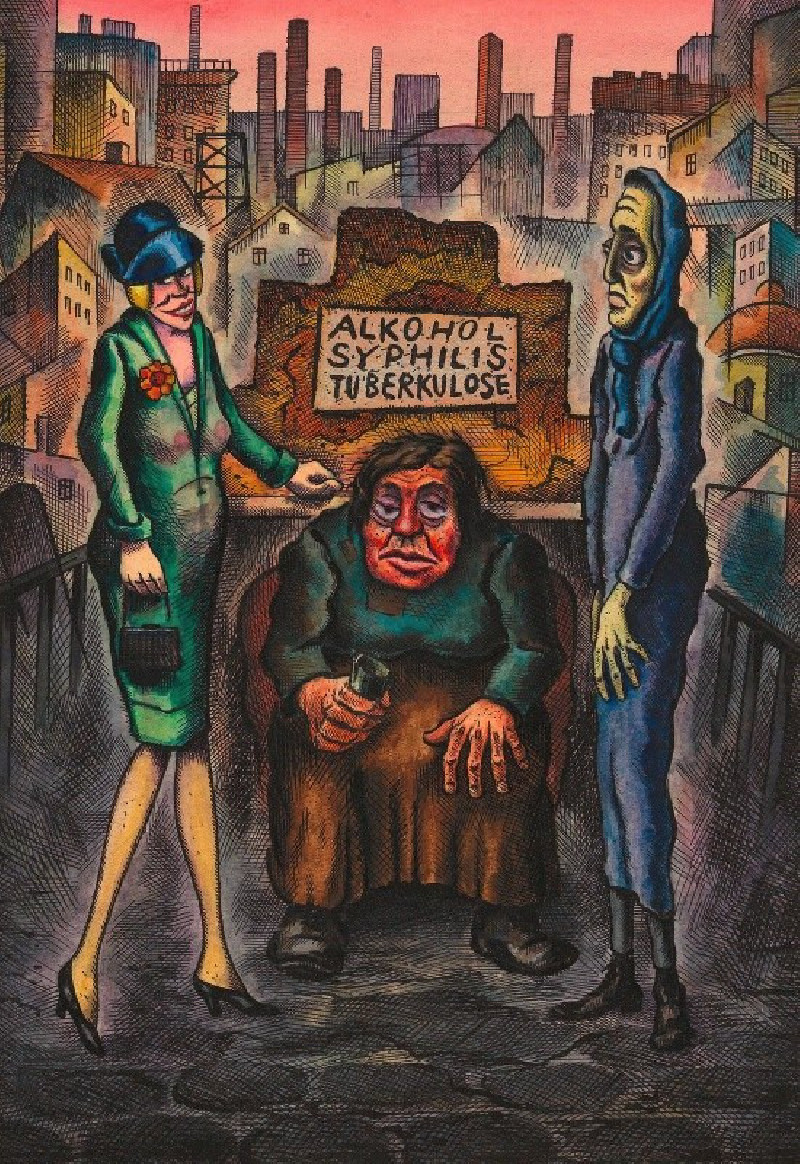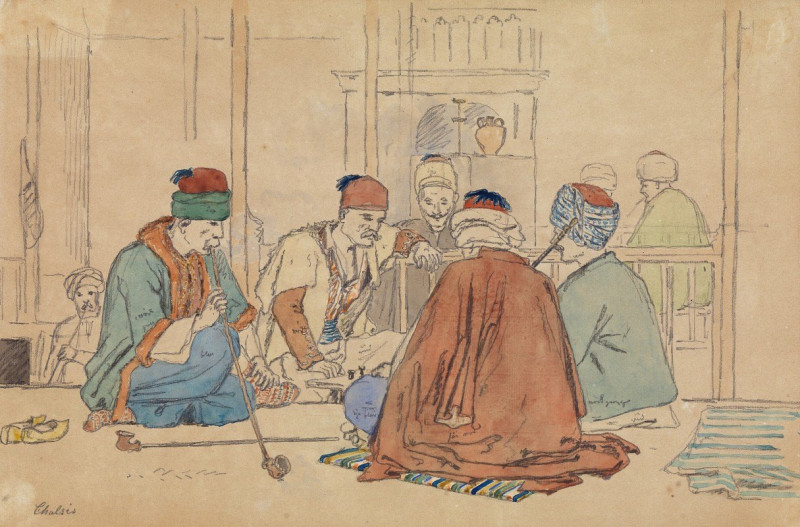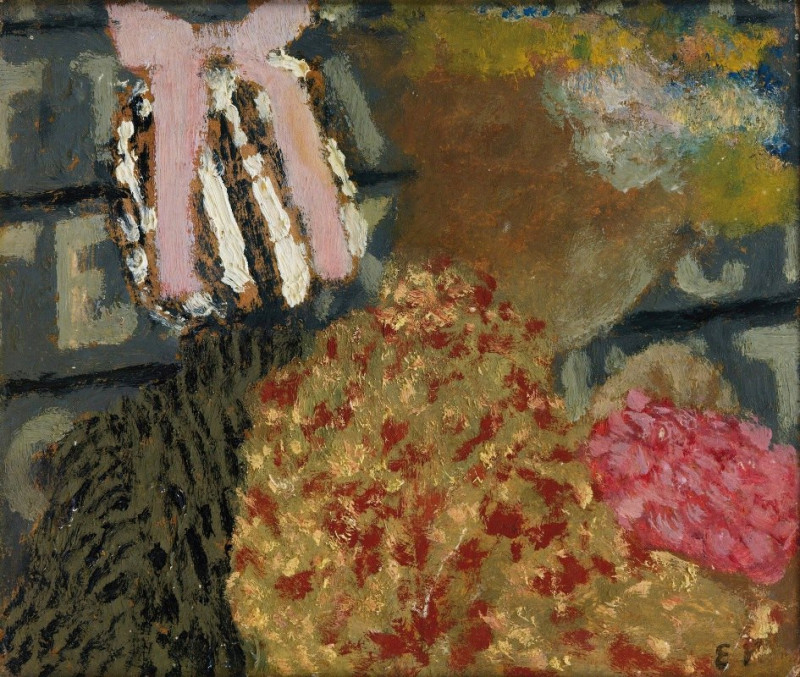Die drei Volksseuchen (ca. 1926)
Technique: Giclée quality print
Recommended by our customers
More about this artwork
"Die drei Volksseuchen" (ca. 1926) by Karl Wiener stands as a poignant social critique in visual form, capturing the prevalent anxieties and health concerns of its time. This evocative painting portrays three figures, each symbolizing the major public health threats identified on the placard they flank: Alcohol, Syphilis, and Tuberculosis. These maladies are depicted as scourges of society, wreaking havoc among the population during the early part of the 20th century.Set against a bleak industrial backdrop with stark factory lines and shadowy urban contours, the painting's mood is somber and introspective. The abstract, distorted figures further emphasize the distortion and pain caused by these diseases, reflecting society's struggle against these relentless enemies. The figure clutching a bottle illustrates the destructive grip of alcoholism. The central, sickly figure symbolizes the devastating impact of tuberculosis, a leading cause of death at that time. Meanwhile, the pale, gaunt character likely represents the ravages of syphilis, with its profound impact on public health.Wiener’s use of dark colors and exaggerated forms intensifies the sense of despair and decay, portraying these diseases as morphing human lives into grotesque realities. Through this powerful work, Wiener not only highlights the physical and emotional toll of these diseases but also critiques societal and industrial advancements that perhaps exacerbated these public health crises.















































